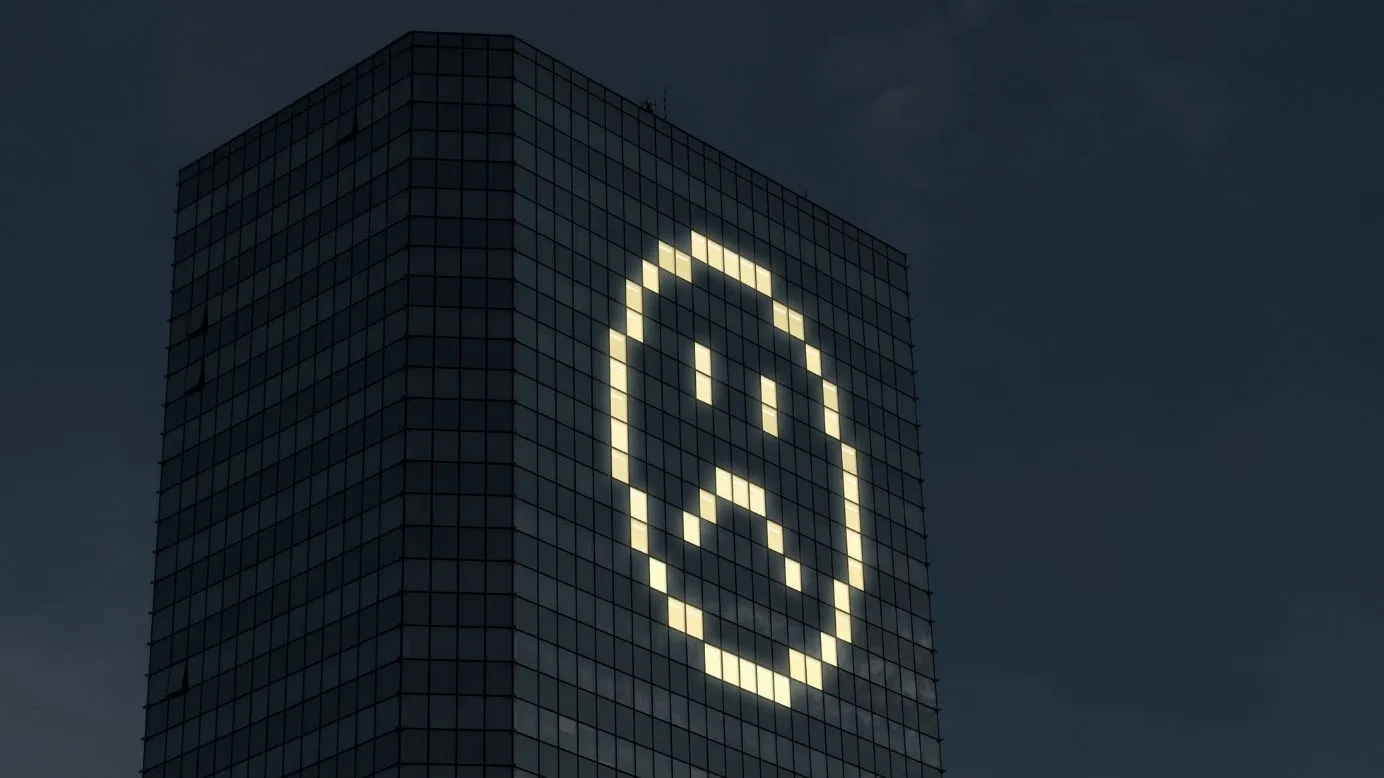Cara Mencegah Burnout di Tempat Kerja: 9 Strategi Berkesan
Burnout bukan sahaja tentang rasa letih—ia juga tentang tekanan yang berpanjangan yang membawa kepada perpisahan, kekecewaan dan juga masalah kesihatan. Blog ini meneroka sembilan cara yang boleh diambil tindakan untuk mengelakkan keletihan di tempat kerja dan cara platform menyukainya Empuls boleh membantu
Pada halaman ini
Burnout isn’t just about feeling overworked—it’s a serious issue that affects productivity, morale, and overall well-being. With increasing workloads, constant digital connectivity, and high workplace expectations, employees across industries are experiencing high levels of stress. Left unaddressed, burnout can lead to disengagement, high turnover rates, and even long-term health issues.
Preventing workplace burnout is not just about taking occasional breaks—it requires a proactive approach from employees and employers. From setting realistic expectations to promoting work-life balance, understanding how to prevent burnout in the workplace can make all the difference in creating a sustainable and healthy work environment.
In this guide, we’ll explore effective strategies for reducing burnout in the workplace and fostering a culture where employees feel valued, motivated, and supported.
Apakah keletihan di tempat kerja dan apakah puncanya?
Workplace burnout is a state of physical, emotional, and mental exhaustion caused by prolonged stress and frustration at work. First introduced by psychologist Herbert Freudenberger in 1974 in his book Burnout: The High Cost of High Achievement, the term describes the extinction of motivation or incentive, particularly when one's dedication to a cause or job fails to yield the expected results.
Unlike everyday stress, burnout doesn’t go away with a good night’s sleep or a short break. It builds up over time, leaving employees feeling depleted, unmotivated, and detached. This overwhelming exhaustion can manifest as apathy towards job responsibilities, decreased performance, and a loss of personal identity in the workplace.
Burnout is often the result of multiple workplace and personal stressors combined. Some of the most common factors include:
- Excessive workload: Employees feel overwhelmed by unrealistic deadlines and heavy responsibilities.
- Lack of control: Unclear job expectations or limited decision-making power can contribute to stress.
- Insufficient support: A lack of communication, feedback, or recognition from management can make employees feel undervalued.
- Poor work-life balance: Long hours and constant work pressure prevent employees from disconnecting and recharging.
- Toxic work environment: Conflict with colleagues or workplace politics can add to mental strain.
Understanding these causes can help employers and employees take proactive steps to prevent burnout in the workplace before it escalates into a serious issue. Addressing workplace stress, fostering a supportive culture, and promoting well-being can significantly create a healthier, more productive work environment.
7 Warning signs of workplace burnout
Recognizing the early signs of burnout is crucial to preventing long-term stress and disengagement. When employees experience burnout, their productivity, motivation, and overall well-being decline, leading to increased turnover and workplace dissatisfaction. Here are seven key warning signs of workplace burnout:
1. Constant fatigue and lack of energy
Employees experiencing burnout often feel physically and mentally drained, no matter how much rest they get. They struggle to stay energized throughout the day, making even simple tasks feel exhausting.
2. Reduced performance and productivity
A noticeable decline in work quality missed deadlines, or a lack of focus can indicate burnout. Employees may struggle to complete tasks they once handled effortlessly, often feeling overwhelmed by their workload.
3. Increased irritability and frustration
Burnout can lead to emotional exhaustion, making employees more irritable and short-tempered. They may become easily frustrated with colleagues, managers, or even routine tasks, creating tension in the workplace.
4. Lack of motivation and engagement
Employees who once took the initiative and enjoyed their work may show disengagement. They may avoid new challenges, contribute less to discussions, or seem indifferent to their responsibilities.
5. Physical symptoms (headaches, insomnia, frequent illnesses)
Chronic stress takes a toll on physical health. Frequent headaches, digestive issues, muscle tension, and trouble sleeping can be warning signs of burnout. A weakened immune system may also result in more frequent sick days.
6. Cynicism and detachment from work
Employees experiencing burnout often develop a negative outlook on their jobs, colleagues, or the company. They may feel disconnected from their work, doubt their contributions, or become indifferent to organizational goals.
7. Increased absenteeism and withdrawal
Frequent lateness, unexplained absences, or avoiding team interactions can indicate burnout. Employees may withdraw from meetings social events, or even stop responding to emails and messages as they struggle to cope with stress.
Kesan buruk keletihan di tempat kerja
If not addressed early, reducing burnout in the workplace becomes increasingly challenging, leading to serious health consequences.
😞Some of the symptoms of workplace burnout are excessive stress, fatigue, insomnia, heart disease, high blood pressure, and a compromised immune system. Personal consequences of burnout could include alcohol abuse, isolation from friends and family, irresponsibility with finances, and an inability to fulfill responsibilities.
Keletihan menjejaskan bidang psikososial pekerja, merosakkan bagaimana prestasi mereka di tempat kerja.
Beberapa kesan buruk keletihan di tempat kerja adalah:
- Pengeluaran kerja
- Produktiviti yang lebih rendah
- Mengurangkan kepuasan kerja
- Konflik yang lebih besar dengan rakan sekerja
Seorang pekerja yang terbakar boleh menjejaskan cara keseluruhan pasukan melakukan. Pekerja boleh menurunkan semangat pasukan dan mengheret ke bawah yang lain. Keletihan juga telah menyebabkan ketidakhadiran yang tinggi di tempat kerja.
This absenteeism affects the work environment around employees. If work is not done on time, other team members cannot do their job.
This cycle often leads to high turnover rates.
💡 A study on HR leaders found that 46% stated employee burnout was responsible for up to 50% of turnover. This highlights the urgent need for organizations to focus on how to avoid burnout at work by fostering a healthier, more balanced work environment.
Faedah mengelakkan keletihan di tempat kerja
💡 A study of 1,000 U.S. workers revealed that while many employees were highly engaged in their work, they were also exhausted and on the verge of leaving their organization. This highlights the importance of understanding how to prevent burnout in the workplace and taking proactive measures to address it.
Employers must prioritize preventing workplace burnout to support employee well-being and maintain a productive and motivated workforce. The benefits of a burnout-free workplace extend beyond the individual:
- Happier employees: A well-balanced work environment leads to employees who feel more satisfied and motivated, making them more willing and able to perform their tasks effectively.
- Stronger team morale: Burnout is contagious; one exhausted employee can negatively impact the entire team, lowering overall efficiency and collaboration.
- Higher productivity: A company that focuses on avoiding burnout at work ensures employees stay engaged and committed, improving overall output and performance.
- Better business outcomes: Reducing stress-related disengagement helps companies meet their goals faster and with better quality.
A happy, energized workforce 😊 is likelier to stay committed, take ownership of their responsibilities, and align their efforts with the company’s primary objectives. By focusing on preventing burnout in the workplace, organizations can create a sustainable work environment that benefits both employees and the business.
Bagaimana untuk mengelakkan keletihan di tempat kerja?
These six tips to avoid workplace burnout will help you improve employee engagement and productivity.
1. Kurangkan tekanan dengan mengurangkan permintaan yang tidak dapat dihubungi
Sometimes, when the work keeps coming in, it’s easy to feel like everything is impossible. There should be an emphasis on projects and goals that are reachable.
Build a strong workplace culture where flagging when feeling overstretched and overwhelmed is okay. Senior management should lead by example and ask employees regularly if they struggle with their workload. This can be done during daily or weekly meetings.
Encourage boundaries and ensure your employees know when it’s okay to say “no” to something. A good philosophy is to “Say yes to the person but no to the task.” This philosophy allows you to be assertive yet friendly.
2. Ikuti semangat
People are more likely to work harder in a position they are passionate about. It’s a good idea to create new roles or move skilled employees to positions they feel more passionate about.
As a manager, moving around your top talent may be challenging, especially if you think a specific role suits them. Let employees find positions for which they show passion is always a risk. But, allowing your employees to follow their passions creates an environment of creativity.
According to research, teachers can cultivate creative mindsets by nurturing their passions. This can also be applied to a manager’s role to lead by example. As a manager, your primary job is to help your team improve their skills.
2. Recognize contributions, big and small
Few things are as demotivating as feeling invisible at work. When employees consistently put in effort without acknowledgment, burnout becomes more likely. Regular recognition—whether from peers or leadership—helps employees feel valued and motivated to keep going.
Empuls enables organizations to create a culture of appreciation, making it easy to celebrate achievements, acknowledge hard work, and ensure employees know their contributions matter.
4. Keep reasonable work hours
Penyelesaian ini mudah. Keletihan boleh berlaku apabila waktu kerja yang ketat tidak dilaksanakan, sama ada oleh majikan atau pekerja. Pastikan pekerja anda dimatikan apabila mereka perlu.
This task may be difficult when your work can be accessed easily on your smartphone, but you must set specific work hours to work. Encourage this with your employees and be flexible with what they can and cannot do daily.
At NICE, a $1B CX company, they encourage their employees to take some days off after, or even during, stressful projects. This allows them to regroup and return to work with a fresh mind. They also use gamification to keep employees engaged and motivated.
5. Keep communication open and honest
Workplace stress doesn’t just come from workload—it also stems from unclear expectations, lack of support, and feeling unheard. Encouraging open conversations about challenges and well-being ensures employees feel comfortable raising concerns before they reach the burnout stage.
Empuls helps companies stay connected with their teams by facilitating regular check-ins and feedback loops. Organizations can use insights to address employee concerns proactively and create a supportive work environment
6. Take mental health days
Encouraging employees to take mental health days can prevent moral decline. When employees know their managers support mental health days, it alleviates concerns about asking for time off.
💡Research by PWC shows that for every $1 spent making the workplace mentally healthy, the return is $2.30 because employees are more productive, reducing absenteeism.
Penyelidikan ini menunjukkan bahawa menggalakkan hari kesihatan mental menjadikan persekitaran kerja yang lebih baik dan memberi manfaat kepada syarikat dalam jangka masa panjang.
Ia menjadi tugas pengurusan untuk memastikan semua pekerja gembira dan berpuas hati dengan persekitaran kerja mereka. Anda perlu memastikan bahawa semua orang dalam pasukan anda selamat dan selesa.
7. Encourage work-life balance
Managers need to support their employees when needing a work-life balance. There is little done to safeguard this balance as employees may work long hours to complete tasks on time.
Ini adalah satu lagi langkah di mana memimpin melalui contoh membantu. Pekerja enggan mengambil cuti hari atau meninggalkan kerja tepat pada masanya jika pengurusan kanan tidak melakukan perkara yang sama. Adalah sihat bagi mereka untuk melihat bos mereka pergi awal atau bercuti.
It would be best to encourage your employees to take vacation time, especially after a stressful period at work. It might also be a good idea to limit how much vacation time is carried over to the next year so that employees are more likely to use their vacation days.
At Maestro Health, they encourage their employees to “sign off” during their downtime. While it’s tough to disconnect, they encourage employees to consider how urgent things are and if it can wait until morning.
Ini membolehkan pekerja menikmati cuti mereka lebih banyak tanpa menangani tekanan kerja yang tidak perlu pada setiap jam.
8. Educate staff on burnout and stress management
This step is vital as many people do not adequately detect burnout signs and symptoms. Prevention is always better than cure. Review the signs of burnout or demotivation with your employees during staff meetings. It might also be a good idea to put it in a memo to access it easily. It is good to take it to the manager if they have minor signs of burnout, like stress and trouble sleeping. In addition to this, managers can help educate employees on stress management techniques.
Pengurus boleh membimbing orang lain dalam bidang seperti kemahiran pengurusan masa dan produktiviti. Galakkan mereka untuk menggunakan aplikasi kesedaran untuk berjalan melalui meditasi berpandu dan mengesan mood mereka.
9. Promote well-being beyond just work
Burnout isn’t always just about work—it can also stem from poor mental health, lack of physical activity, or general stress. Encouraging wellness programs, stress management workshops, or even casual team activities can create a more balanced approach to employee engagement.
Empuls makes it easier to integrate wellness programs into company culture, helping teams engage in initiatives that prioritize both mental and physical well-being.
Prevent workplace burnout with Empuls
Burnout builds up when employees feel overworked, undervalued, and disconnected. Preventing it requires more than check-ins—proactive support, recognition, and a culture prioritizing well-being. Empuls makes this simple.
✔ Recognize efforts before burnout hits: Appreciation reassures employees their challenging work matters. Empuls integrates recognition into daily workflows, reinforcing a sense of value.
✔ Encourage open communication: When employees feel unheard, stress rises. Empuls’ survey tool captures honest feedback, helping leaders act before burnout escalates.
✔ Support well-being with meaningful perks: Paychecks aren’t enough. Empuls offers tax-free fringe benefits and wellness perks that enhance physical, mental, and financial well-being.
✔ Promote work-life balance with thoughtful rewards: Empuls’ milestone rewards encourage employees to recharge, preventing burnout before it starts.
✔ Strengthen team connections: Feeling isolated accelerates burnout. Empuls’ social intranet fosters collaboration and engagement, keeping employees connected.
Burnout prevention isn’t just about workloads—it’s about creating a culture where employees feel valued and supported. Empuls helps organizations build a healthier, more engaged workplace.
Pemikiran akhir
Walaupun keletihan boleh memberi banyak kesan buruk kepada pekerja dan syarikat, ia boleh dicegah dengan menggalakkan persekitaran kerja yang lebih terbuka.
To simplify this, Empuls offers a comprehensive employee engagement solution that makes open communication and feedback as simple as 123! With Empuls, you can easily spot absenteeism trends and ensure that those employees are right.
Apa yang penting untuk diperhatikan ialah pekerja yang berisiko keletihan perlu memastikan kehidupan mereka kembali seimbang, dan syarikat anda harus memberi tumpuan untuk menyokong mereka dan memberi mereka alat yang diperlukan untuk melegakan tekanan mereka.













